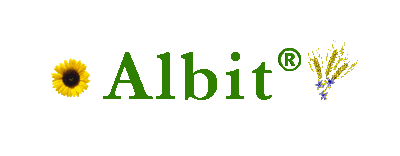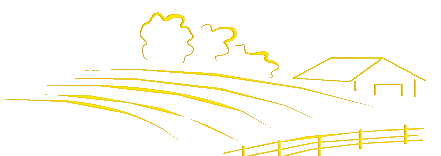|
|
Albit is a product that works as "three", at the same time it performs the functions of antidote, growth regulator and fungicide. At the same time, due to the unique modern biotechnological methods of production and low consumption rate, the manufacturer is able to keep the cost of Albit extremely low. This feature distinguishes Albit from analogues (Fig. 1).
Fig. 1. Approximate price of hectare dosage of Albit and the analogues (Russian domestic prices)
One of the reasons for the low cost of Albit application is it’s low application rate. For the most crops, application rates are as follows: 30-50 mL / ton for the treatment of seeds (presowing treatment), and 30-50 mL / ha (spraying on vegetation) (Table 1). On cereals, the rate of application of Albit is in most cases 40 mL / m (40 mL / h). Accordingly, 1 liter of the drug is used for a single pre-sowing treatment of 25 tons of cereal seeds or for about 100 hectares. One liter of Albit is also enough for treatment of 25 hectares of grain crops during vegetation. At a maximum number of treatments of grains total consumption of Albit per hectare is 90 mL Albit (40 mL / t + 40 mL / ha at tillering + 40 mL / ha in earing-flowering); 11.1 hectares of crops can be treated with 1 liter of Albit. Table 1. The consumption rates of Albit at the treatment of various crops. Cultures are listed in alphabetical order. The average recommended consumption rates are shown. Treatments: p – presowing, v - foliar spraying
Years of field trials and continuous application of Albit in agriculture showcase that Albit is exceptionally cost-efficient. With Albit, you can spend less and receive top-class plant protection and yield increase. Since 1997, multiple field trials were conducted to compare Albit with similar products. When we look at cost-efficiency (pure profit received from one hectare), the trials show that Albit treatment is on average 2.25 times higher than treatments with similar bio-products and growth regulators. Cost-efficiency of Albit is also 1.89 times higher than that of chemical fungicide treatments (here you can see trial data for each year). During all years of using Albit in Russian agriculture, cost-efficiency of Albit application always stayed above 200%. Depending on the crop and time of the year, the rate of return (payback) varied from 3 to 25-fold. For example, throughout the years, the rate of return of using Albit on sugar beet in Krasnodar Region (Russia) varied from 12.7 to 23-fold. This equally means that for each ruble invested into Albit, the consumer received from 12.7 to 23 rubles in return (data provided by Rosselhoscenter). In the countries of the European Union, the pure profit of using Albit on field crops is, on average, 100 EUR per hectare. A story of Estonian farmer Kalle Kits demonstrates the incredible cost-efficiency of using Albit. Kalle’s agrosystem took first place in the country in cost-efficiency of land use. Kalle received a profit of 720 EUR per hectare ( pollumajandus.ee ). Results of field trials of Albit in North Carolina (US) provide another recent example of the profitability of Albit. In these trials, Albit was compared with other plant growth stimulators used on corn. Albit returned the most profit of all products as well as a 50-fold payback. Albit allows you to spend less, not only because of its low price but also due to its fungicidal qualities. When used together with fungicides, Albit can increase the fungicide’s biological effectiveness by acting as a fungicidal agent and improving the plant’s immune system. Therefore, you can use a lower rate of commercial fungicide. Field trials of leading Russian agricultural institutes showed that applying Albit with the halved rate of a fungicide is no less effective than using a full rate of fungicide. Over 250 field trials of Albit with active ingredients of commercial fungicides and seed treatment agents were conducted; for more information, please, here. Fungicidal and antidotal quality of Albit allows to significantly decrease the pesticide impact on crops and decrease the costs of treatments by 20-45% while maintaining the desired protective effect. Applying Albit together with insecticides also can increase the protective activity of insecticides. Combination of immune reactions in plants, in comparison with such in animals, is notable for its low specificity. Immune responses of a plant ensure resistance to biopathogens (such as bacteria, fungi, arthropods) and abiotic stresses (such as abnormal temperature, humidity, light, or pesticide stress). Chemical immunizers that promote resistance to specific pathogens or stress factors can, in turn, initiate the resistance to other pathogens or stresses. Albit has a similar capacity. Field trials of Albit on cereals (oats, wheat), canola and flax showed a particular protective activity of Albit against a combination of several pests. It was determined that treating seeds and spraying crops with Albit increased resistance of oats against frit fly (Chloropidae), shield bug (Eurygaster integriceps), wheat miner, flea beetle (Phyllotreta vittula). Resistance was measured by increased biological activity by 27-71%. With Albit, the resistance of flax to flax flea beetle increased by 21.1%. The resistance of wheat to thrips larvae increased by 19%; the resistance of canola to crucifer flea beetle, thrips and cabbage flies increased by 10-16.6%. Adding Albit to the tank mix with insecticides increases the biological effectiveness of insecticides by 20%. Moreover, this combination increases yield by 7 to 28% (in comparison to insecticide treatment without Albit). This data allows us to suggest applying minimal rates of insecticides when using it with Albit; in some cases, the rates of insecticides can be lowered by 20-25%. To read more on this topic and see the first-hand data, please, see here.High efficiency of combined use of Albit with fertilizers showed in many trials that took place all over the world: at Moscow State University (Russia); Agricultural Research Institute (Czech Republic); State Stende Cereals Breeding Institute (Latvia); Agricultural Research and Development Station Secuicni-Neamt (Romania); Agrisearch Services Pty (Australia) and others. Trials determined that Albit increases the coefficient of nutrient uptake from fertilizers. With Albit, nitrogen uptake increases by 25%; phosphorus – by 47%; potassium – by 18%. Based on this data, we can see that using Albit together with fertilizers allows to decrease the rate of mineral fertilizers use by 10-30% without any impact on the effect of fertilizer. For more information and trial data, please, see here. High profitability of using Albit is ensured by its low consumption rate, attractive price, and ability to enhance the effect of pesticides and fertilizers.
|
|
|||||||||||||||||||||||||||||||||||||||||||||||||||||||||||||||||||||||||||||||||||||||||||||||||||||||||||||||||||||||||||||||||||||||||||||||||||||||||||||||||||||||||||||||||||||||||||||||||||||||||||||||||||||||||||||||||||||||||||||||||||||||||||||||||||||||
Terms and Conditions
|
|



